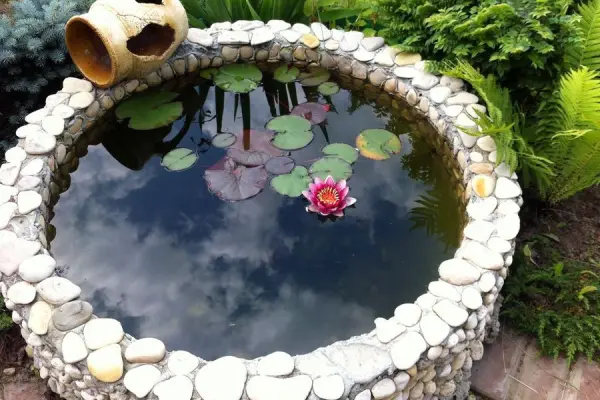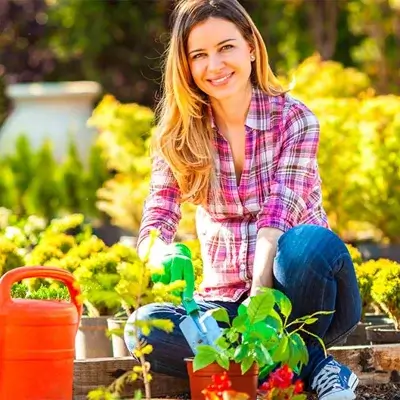Imagine a morning when you step into your garden with a cup of coffee, and sunlight dances on the surface of your own pond, where goldfish swim among blooming water lilies. Creating a water feature on your property is not just a trendy landscape design trend, but a proven way to increase property value by 10-15% and improve your garden's microclimate. According to the National Association of Realtors, water features are in the top 5 landscape improvements that increase property value.
Beginners shouldn't fear terms like 'waterproofing' or 'pump' — we'll explain everything simply. Your pond will start with just a couple of steps! Developing a water feature by yourself or with professional help is an exciting adventure that will transform your property. An artificial pond can become the center of family recreation, a place for meditation, or even a source of additional income with proper fish stocking.
According to research by the International Association of Landscape Designers, 15% of private property owners include a decorative pond in their landscaping project. A properly designed landscape water feature can reduce air temperature around it by 2-3°C on hot days, improving the property's microclimate. Let's figure out how to properly approach creating a pond at your cottage, what materials to choose for a garden pond, and how much professional pond development costs.
Types of Water Features for Garden Properties
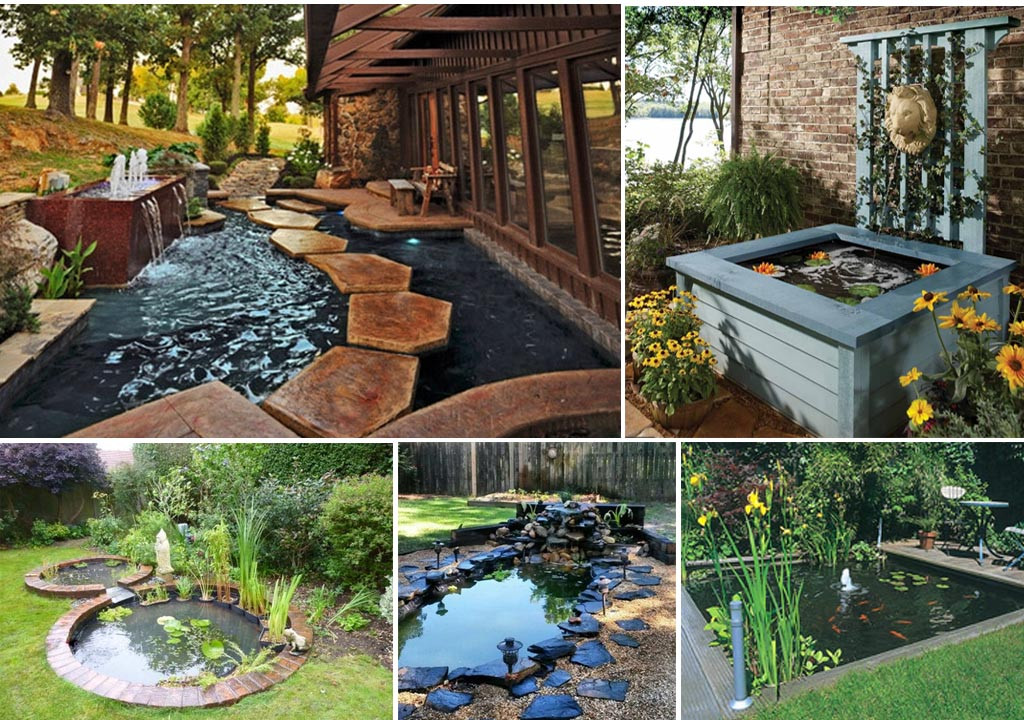 Before starting pond construction, it's important to determine its type and purpose. This affects the choice of location, pond depth, materials used, and filtration system. Here are the main options that can be implemented on your own property:
Before starting pond construction, it's important to determine its type and purpose. This affects the choice of location, pond depth, materials used, and filtration system. Here are the main options that can be implemented on your own property:
| Water Feature Type | Purpose | Depth (m) | Area (m²) | Cost ($) |
|---|---|---|---|---|
| Decorative Pond | Property decoration | 0.5-1.0 | 5-15 | 800-2500 |
| Fish Pond | Fish breeding | 1.5-2.5 | 20-50 | 3000-8000 |
| Swimming Pond | Swimming and recreation | 1.5-3.0 | 50-150 | 10000-25000 |
| Cascade Water Feature | Decor with waterfall | 0.3-1.0 | 3-10 | 1500-4000 |
| Biofiltration Zone | Water purification | 0.3-0.5 | 10-30 | 2000-5000 |
This table will help you determine the type of water feature based on usage goals and budget. Remember that the final cost of pond construction depends on many factors, including the region of work and selected materials.
Site Selection and Water Feature Design
.jpg) Proper pond location on your property is a key success factor. Whether it's a cottage pond or garden pond, consider the following criteria when choosing a location:
Proper pond location on your property is a key success factor. Whether it's a cottage pond or garden pond, consider the following criteria when choosing a location:
- Water feature lighting: optimally 5-6 hours of direct sunlight per day
- Groundwater level: affects waterproofing type selection
- Distance from trees: minimum 3-5 meters from large trees
- Property terrain: natural depressions are suitable for dug ponds
- Utility accessibility: electricity for pump equipment and filtration
"When designing a water feature, it's critically important to consider the natural slope of the property. In 70% of cases, incorrectly chosen location leads to problems with water drainage and flooding of adjacent territory," – notes John Smith, landscape architect with 15 years of experience.
Materials for Water Feature Construction
 Material selection determines construction durability and water feature creation cost. The modern market offers several waterproofing options:
Material selection determines construction durability and water feature creation cost. The modern market offers several waterproofing options:
Waterproofing Film
The most popular material for pond construction. Butyl rubber film and EPDM membrane last up to 50 years, resistant to UV radiation and mechanical damage. Average cost of quality pond covering is $15-25 per m².
Pre-formed Pond Shell
Ideal solution for small decorative ponds up to 10 m². Installation simplicity is compensated by size and shape limitations. Price varies from $200 to $2000 depending on volume.
Concrete Construction
Most durable but also costly option. Suitable for large water features and pools. Requires professional execution and quality waterproofing. Work cost starts from $100 per m³.
???? Terminology Dictionary for Beginners:
- EPDM membrane – synthetic rubber, super-durable waterproofing material lasting up to 50 years
- Wintering pit – deep part of pond (1.5-2.5 m) where fish overwinter under ice
- Biofiltration zone – shallow area with plants, natural filter for water purification
- Oxygenators – aquatic plants that release oxygen (elodea, hornwort)
- Geotextile – protective fabric under liner, prevents punctures from stones
Recommended Equipment Manufacturers
Many brands are represented in the market, but the most reliable are considered:
- Oase (Germany) - premium segment, warranty up to 5 years
- Pontec (Germany) - optimal price/quality ratio
- Aquael (Poland) - budget segment with good quality
- SunSun (China) - economical solutions for small ponds
Pond Construction Stages: Step-by-Step Guide for Beginners
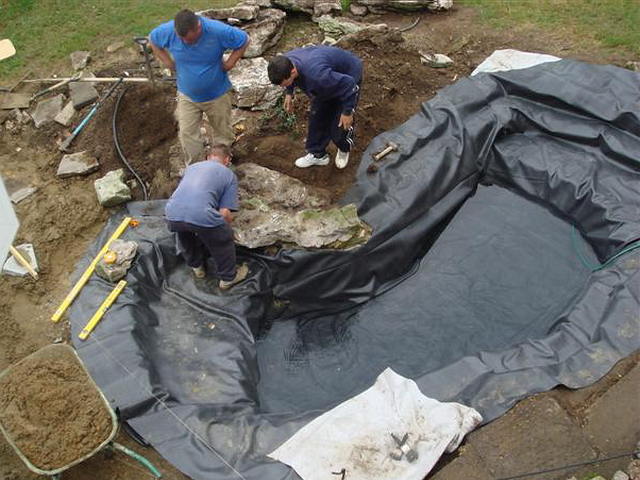 Pond construction may seem like a complex task, but with the right approach it's an exciting project accessible to everyone. According to the official guide to planning and pond construction from the New York State Department of Environmental Conservation, the key to success is consistency and attention to detail. Here's a detailed instruction with practical tips:
Pond construction may seem like a complex task, but with the right approach it's an exciting project accessible to everyone. According to the official guide to planning and pond construction from the New York State Department of Environmental Conservation, the key to success is consistency and attention to detail. Here's a detailed instruction with practical tips:
- Planning and Marking
- Determining pond size and shape
- Marking contours on site
- Planning pond zoning (shallow zone, wintering pit)
- Earthwork
- Excavating pit considering slopes
- Forming shoreline
- Preparing base (sand cushion)
- Waterproofing
- Laying geotextile for protection
- Installing insulation covering
- Fixing waterproofing edges
- Technical Equipment
- Installing filtration system
- Mounting pump equipment
- Connecting UV lamps for pond
- Decorating
- Laying natural stone
- Planting aquatic plants
- Designing coastal zone
Pond Filtration and Purification System: Detailed Guide
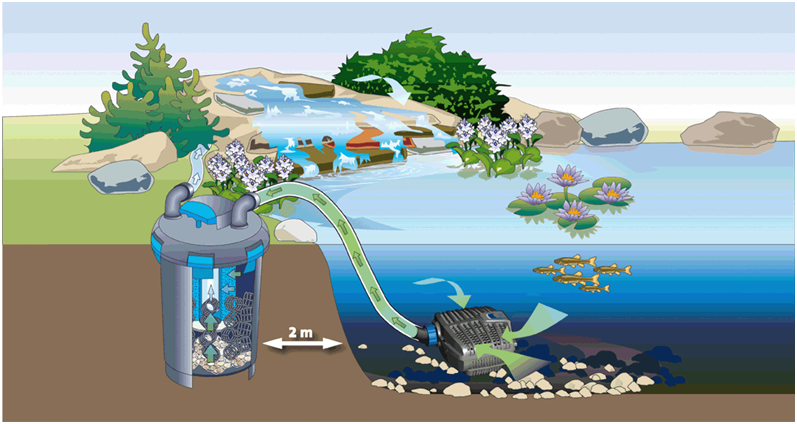 Biological purification and mechanical filtration are the foundation of a healthy pond ecosystem. A properly selected purification system prevents water blooming and maintains optimal conditions for fish and plants. Water balance research shows that water resource management in artificial ecosystems requires a comprehensive approach.
Biological purification and mechanical filtration are the foundation of a healthy pond ecosystem. A properly selected purification system prevents water blooming and maintains optimal conditions for fish and plants. Water balance research shows that water resource management in artificial ecosystems requires a comprehensive approach.
Filter Types and Their Comparison
There are three main filtration types, each with its advantages:
- Flow-through filters: ideal for small ponds up to 10 m³. Easy to clean, affordable price ($200-600)
- Pressure filters: suitable for ponds with waterfalls, create pressure up to 5 m. Price: $400-1200
- Modular systems: for large water features from 50 m³. Most efficient but expensive ($1500-5000)
Technical parameters for equipment selection:
- Pump capacity: pond volume × 0.5 = l/hour (example: for 10 m³ need 5000 l/hour pump)
- UV lamp:
- For decorative ponds: 1 W per 1000 l
- For fish ponds: 2-3 W per 1000 l
- Lamp replacement every 9-12 months
- Biofilter: volume 10-15% of water feature volume (with fish - 20%)
Expert tip: "In my practice, the best results come from combining a flow-through filter with UV sterilizer. For a 20 m³ pond with koi carp, I use Oase Biotec 12 + UV 55W. Water remains crystal clear even in August!" – Peter Wilson, water systems specialist.
Modern Automation Systems: Smart Water Feature
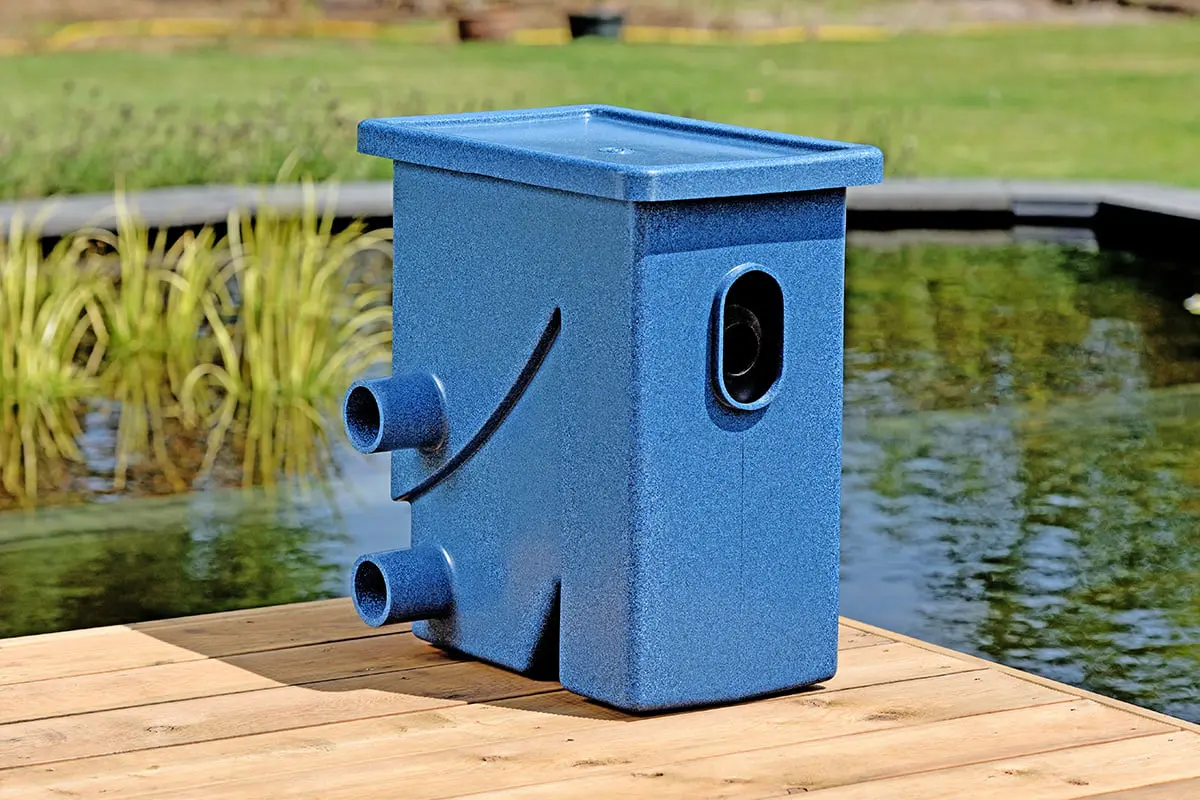 Imagine your pond self-monitors water quality, turns on lighting at sunset, and sends smartphone notifications about any problems. This is the reality of modern automation systems!
Imagine your pond self-monitors water quality, turns on lighting at sunset, and sends smartphone notifications about any problems. This is the reality of modern automation systems!
Popular Water Feature Management Systems
| System | Functions | Price ($) | Suitable for |
|---|---|---|---|
| Oase ProfiLux Garden | Lighting, pumps, basic control | 500-800 | Small ponds up to 20 m³ |
| AquaForte Smart | pH, temperature, filtration, Wi-Fi | 1200-1800 | Medium ponds with fish |
| Neptune Systems Apex | Full control, dosers, cameras | 2000-3500 | Professional systems |
| DIY on Arduino | Customizable functions | 200-600 | For tech-savvy users |
Real example: "After installing AquaForte Smart system on my koi pond (30 m³), I forgot about water problems. The system automatically adjusts pH, turns on aeration when oxygen decreases, and even feeds fish on schedule. In 2 years, saved about $1500 on maintenance!" – Mark Johnson, country home owner.
For example, Oase EasyControl ($550) manages pumps and lighting via smartphone for medium-sized ponds, while simple SunSun timer ($35) suits ponds up to 5 m². Aquael Smart Pond ($400) monitors pH and water temperature through an app, making care as simple as possible.
What automation provides:
- Time savings: 2-3 hours per week on maintenance instead of 10-12
- Cost reduction: 30-40% less expenses on chemicals and electricity
- Fish health: stable water parameters reduce stress and diseases
- Remote control: pond management from anywhere in the world
Plants and Fish for Water Features
Aquatic plants not only decorate the pond but also participate in natural water filtration. A classic water feature set includes:
- Deep-water plants: water lilies, nymphaea (planting depth 0.5-1.5 m)
- Marginal plants: sedge, cattail, bog iris
- Floating plants: water hyacinth, water lettuce
- Oxygenators: elodea, hornwort
My pond is the heart of the garden: carp swim, water lilies bloom, and children spend hours watching underwater life. But don't rush with fish — it's important to achieve proper ecosystem balance first! I started with 10 koi carp in a 30 m² pond, but after a year realized that overpopulation leads to water quality problems. Now I follow the rule: 1 kg of fish per 1000 liters of water. This ensures ideal ecosystem balance.
– Michael Thompson, aquatic plants nursery owner
Seasonal Water Feature Maintenance
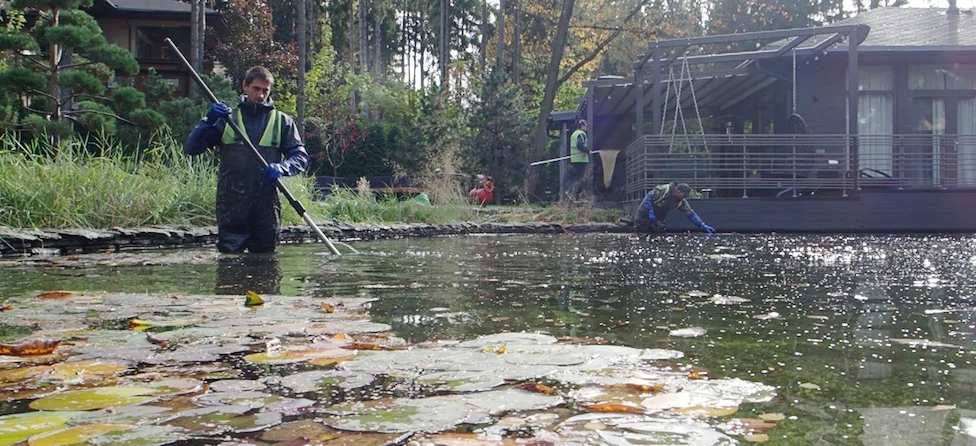 Proper pond maintenance guarantees its beauty and health throughout the year. Maintaining a water feature yourself doesn't require special skills if you follow our recommendations. Here are the main seasonal tasks for garden ponds:
Proper pond maintenance guarantees its beauty and health throughout the year. Maintaining a water feature yourself doesn't require special skills if you follow our recommendations. Here are the main seasonal tasks for garden ponds:
Spring (March-May)
- Cleaning pond from organic debris
- Starting filtration system
- Fertilizing plants
- Checking water quality
Summer (June-August)
- Controlling water level and topping up if necessary
- Removing excess vegetation
- Fighting water blooming
- Regular filter cleaning
Fall (September-November)
- Removing fallen leaves
- Preparing plants for winter
- Installing net over water feature
- Preparing pond for winter
Winter (December-February)
- Ensuring gas exchange (ice hole or aerator)
- Monitoring fish condition
- Protecting equipment from freezing
Preparing Water Feature for Winter and Winter Care
Proper water feature preparation for winter is critically important for fish and plant survival. In regions with negative temperatures, it's necessary to:
- Install aerator or de-icer to maintain ice hole
- Remove heat-loving plants or move them indoors
- Clean bottom from organic debris before freezing
- Dismantle pumps and filters (except winter models)
- Install floating objects to compensate ice pressure
Cost of Turnkey Water Feature Creation
Turnkey pond construction price varies widely. Final cost is affected by size, pond shape, project complexity, and work region. If you've decided to order a turnkey water feature or are looking for pond creation services, here's an approximate cost structure for professional pond development:
| Expense Item | Share in Total Cost (%) | Approximate Cost ($) |
|---|---|---|
| Design | 5-10% | 200-1000 |
| Earthwork | 20-30% | 800-3000 |
| Waterproofing | 25-35% | 1000-3500 |
| Equipment | 20-30% | 800-3000 |
| Decoration | 15-25% | 600-2500 |
These figures will help you plan your budget and understand where you can save and where it's better not to economize. Remember that quality materials and equipment are the key to your water feature's longevity.
Detailed Water Feature Cost Calculator
Accurate budget calculation will help avoid unpleasant surprises. Here's a detailed calculation formula considering all factors:
Basic construction cost:
- Economy option: area × $150-200
- Standard: area × $250-350
- Premium: area × $400-600
Additional expenses:
| Element | Cost ($) | Importance |
|---|---|---|
| Filtration system | 500-3000 | Mandatory |
| LED lighting | 300-1500 | Desirable |
| Waterfall/cascade | 1000-4000 | Optional |
| Automation | 500-3500 | For convenience |
| Plants and fish | 200-1000 | Recommended |
Annual maintenance costs:
- Electricity: $200-600/year (pumps, filters, lighting)
- Chemicals and bio-preparations: $100-300/year
- Consumables replacement: $150-400/year (UV lamps, filter materials)
- Professional cleaning: $300-800/year (optional)
Example calculation for 30 m² standard level pond:
- Basic cost: 30 × $300 = $9,000
- Filtration: $1,500
- Lighting: $600
- Plants: $400
- Total: $11,500
- Annual maintenance: ~$800
- Monthly expenses: $20-40 (electricity and preparations)
Simple calculator for 10 m² pond: 10 × $200 = $2000 (basic cost). Add $200 for pump, $100 for plants and $150-300 per year for care.
Typical Mistakes in Water Feature Creation
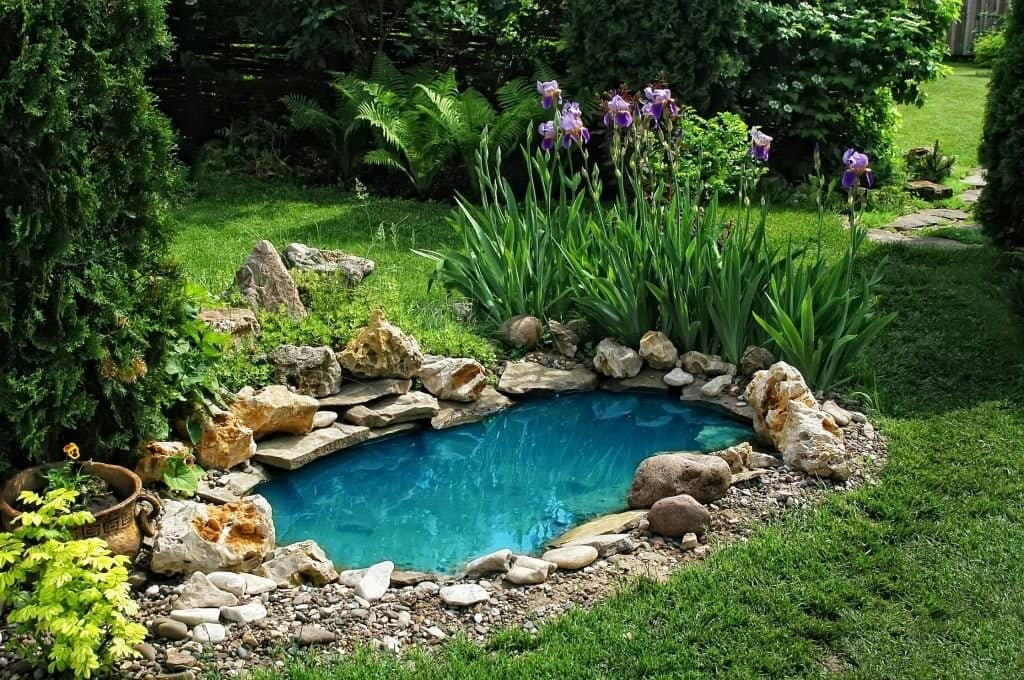 Analysis of over 500 projects shows that most problems arise from the following mistakes:
Analysis of over 500 projects shows that most problems arise from the following mistakes:
- Insufficient depth - shallow water features quickly warm up and overgrow with algae. One gardener chose a shallow pond (0.4 m) and got 'green soup' after just a month. Depth from 0.6 m — and your water feature will shine with clarity!
- Lack of zoning - uniform depth doesn't create conditions for different plant species
- Weak filtration system - saving on equipment leads to constant water quality problems
- Fish excess - overpopulation leads to pollution and diseases
- Wrong location choice - too much shade or sun negatively affects ecosystem
Specifics of Creating Water Features in Different Conditions
Urban plots (less than 6 acres)
- Compact forms: round or oval ponds 5-15 m²
- Vertical gardening to save space
- Multi-level cascades instead of large areas
- Mini-ponds in bowls for balconies and small yards (1-2 m², from $150) — stylish and simple
Climate Features
- Northern regions: minimum depth 2 m, enhanced winter aeration, frost-resistant materials. In cold zones, make a wintering pit 2-2.5 m for fish.
- Southern regions: shading 40-50% of area, enhanced filtration, oxygenator plants. In hot regions, place pond in shade to prevent water evaporation.
- Arid zones: water topping systems, evaporation protection, deep basins. In heat, add water lettuce to create natural shade.
Common Problems and Their Solutions
Even with proper water feature construction, problems can arise. Here are the most common ones:
| Problem | Cause | Solution |
|---|---|---|
| Water blooming | Excess nutrients and sunlight | UV lamp, bio-preparations (Tetra Pond AlgoRem 250ml/$18), partial shading |
| Cloudy water | Suspended particles, fish overfeeding | Improved filtration, flocculants (Aquael BioSafe $15) |
| Unpleasant odor | Anaerobic processes at bottom | Aeration, sludge removal, bacterial preparations (JBL FilterStart $20) |
| Water leak | Waterproofing damage | Damage localization and repair |
| Fish death | Oxygen deficiency, diseases | Improved aeration, quarantine new fish |
Timely identification and problem solving will help maintain your water feature's health for many years.
Conclusion
Your pond is magic: water babbling, water lily dance, and guest admiration. Start small and share photos on social media! Creating a water feature on your property is an investment in your home's beauty and comfort. A properly designed and built pond will serve for decades, delighting you and increasing property value. The key to success is thorough planning, quality materials, and regular care.
Start with a small decorative pond to understand basic principles. Creating a water feature on your property yourself is an excellent way to gain experience. As skills develop, you can expand the water feature or create a more complex system with cascades and streams. Remember that each landscape water feature is unique, and what works in one garden may not suit another. Landscape design of a water feature should consider the specifics of your garden pond on the property.
Ready to start your project? Here's your action plan:
- Measure your property and determine optimal location
- Choose water feature type and style
- Calculate budget using our calculator
- Get specialist consultation (many companies offer free site visits)
- Start small – even a mini-pond will change your garden's atmosphere!
Whether you're planning a DIY water feature or want to order a turnkey pond, your ideal pond with fountain or cozy garden water feature awaits implementation! Start today, and in just a few weeks you'll be enjoying your own oasis of tranquility.
Remember: every great garden started with a first idea. Your water feature can become that special highlight that transforms an ordinary property into a paradise corner. Take action!
